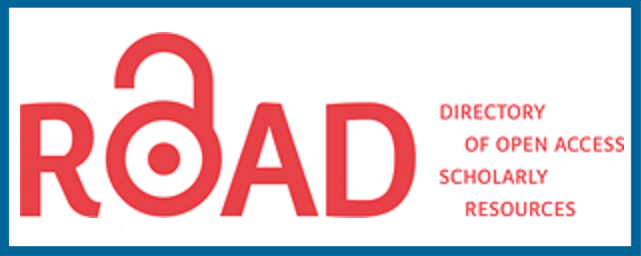Development of Ethno-STEM-based Science Learning Tools
DOI:
https://doi.org/10.52032/jisr.v5i2.143Abstract
Ethno-STEM science learning integrates local wisdom into science materials and is taught using the STEM approach. This research is a process of activities to produce valid learning tools. The learning tools developed in this study are lesson plans (RPP), Student Activity Sheets (LKPD), and student creative thinking skills test sheets. This research focused on the validation test (construct and content as well) and the response test of junior high school students. The data collection technique used was a questionnaire. The instruments used in this study were a validation questionnaire and a student response questionnaire. The validators in this study were two people, namely content experts and learning media experts with a background in science education. The final result of this research is to produce ethno-STEM-based science learning tool development products with valid to very valid categories, and student responses related to the learning tools provided show the highest percentage in the good to excellent category.
References
Azmi Asra, Festiyed, Mufti, F., & Asrizal. (2021). Pembelajaran Fisika Mengintegrasikan Etnosains Permainan. KONSTAN Jurnal Fisika Dan Pendidikan Fisika, 6(2), 66– 73.
Baker et al (1995). The Effect of Culture on the Learning of Science in nonWesternCountries: The Results of a Integrated Research Review. International Journal Science Education. Vol.17.
Beatty, A. (2011). Successful STEM Education. In Successful STEM Education. https://doi.org/10.17226/13230
Carnevale, A. P., Smith, N., & Melton, M. (2011). STEM. Georgetown University Center on Education and the Workface.
Craig, D. J. (2009). Defining a 21st century education (Issue July). The Center for Public Education.
Cretu, D. (2017). Fostering 21st Century Skills For Future Teachers. May, 672–681. https://doi.org/10.15405/epsbs.2017.05.02.82
Education, C. on H. S. S. or P. for K.-12 S., Assessment, B. on S. E. and B. on T. and, & Education, D. of B. and S. S. and. (2011). Successful K- 12. The National Academic Press.
Erdem, C. (2020). C Hapter O Ne I Ntroduction To 21 St C Entury. October 2019.
Kartono, Hairida, G. Bujang. (2010). Penelusuran Budaya dan Teknologi Lokal dalm Rangka Rekonstruksi dan Pengembangan Sains di Sekolah dasar. Pontianak: FKIP,
Universitas tanjungpura.Kim, K. H. (2017). The Torrance Tests of Creative Thinking - Figural or Verbal: Which One Should We Use? Creativity. Theories – Research - Applications, 4(2), 302–321. https://doi.org/10.1515/ctra-2017-0015
Mazgon, J., & Stefanc, D. (2012). Importance of the various characteristics of educational materials: Different opinions, different perspectives. Turkish Online Journal of Educational Technology, 11(3), 174–188.
Permanasari, A. (2016). STEM Education?: Inovasi dalam Pembelajaran Sains. SEMINAR NASIONAL PENDIDIKAN SAINS “Peningkatan Kualitas Pembelajaran Sains Dan Kompetensi Guru Melalui Penelitian & Pengembangan Dalam Menghadapi Tantangan Abad-21” Surakarta, 22 Oktober 2016, 23–34.
Ratumanan, G. T. and Laurens. (2011). Evaluasi Hasil Belajar Tingkat Satuan Pendidikan. Surabaya: Unesa University Press.
Riduwan. (2013). Skala Pengukuran Variabel-variabel Penelitian. Bandung: Alfa Beta.
Rosenshine, B. (2012). Principles of Instruction: Research-based strategies that all teachers should know. American Educator, 12–20.
Sarini, P., & Selamet, K. (2019). Pengembangan Bahan Ajar Etnosains Bali bagi Calon Guru IPA. Wahana Matematika Dan Sains?: Jurnal Matematika, Sains, dan Pembelajarannya, 13(1), 27–39.
Sartika, S. B., Efendi, N., & Wulandari, F. E. (2022). Efektivitas Pembelajaran IPA Berbasis Etno-STEM Dalam Melatihkan Keterampilan Berpikir Analisis. Jurnal Dimensi Pendidikan Dan Pembelajaran, 10(1), 1–9.
Suastra, I.W. 2010. Model Pembelajaran Sains Berbasis Budaya Lokal untuk Mengembangkan Kompetensi Dasar Sains dan Nilai Kearifan Lokal di SMP. Jurnal Pendidikan dan Pengajaran. Jilid 43, No.1, April 2010
Sulaiman, J., & Ismail, S. N. (2020). Teacher competence and 21st century skills in transformation schools 2025 (TS25). Universal Journal of Educational Research, 8(8), 3536–3544. https://doi.org/10.13189/ujer.2020.080829.
Thiagarajan, S., Semmel, D., Semmel., M. (1974). Instructional development for training teachers of exceptional children A sourcebook. USA: Center for Innovation in Teaching the Handicapped Indiana University Bloomington, Indiana.
Trilling, B., & Fadel, C. (2009). Bernie Trilling, Charles Fadel-21st Century Skills_ Learning for Life in Our Times -Jossey-Bass (2009). Journal of Sustainable Development Education and Research, 2(1), 243.
White, D. W. (2014). What Is STEM Education and Why Is It Important? Florida Association of Teacher Educators Journal, August, 1–9. https://www.ccc.edu/departments/Documents/STEM_labor.pdf.
















